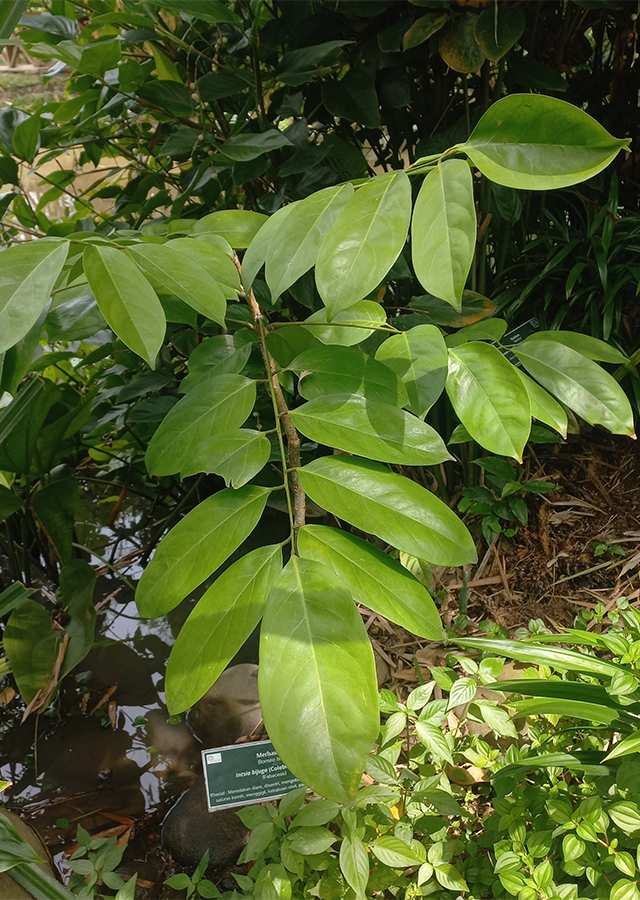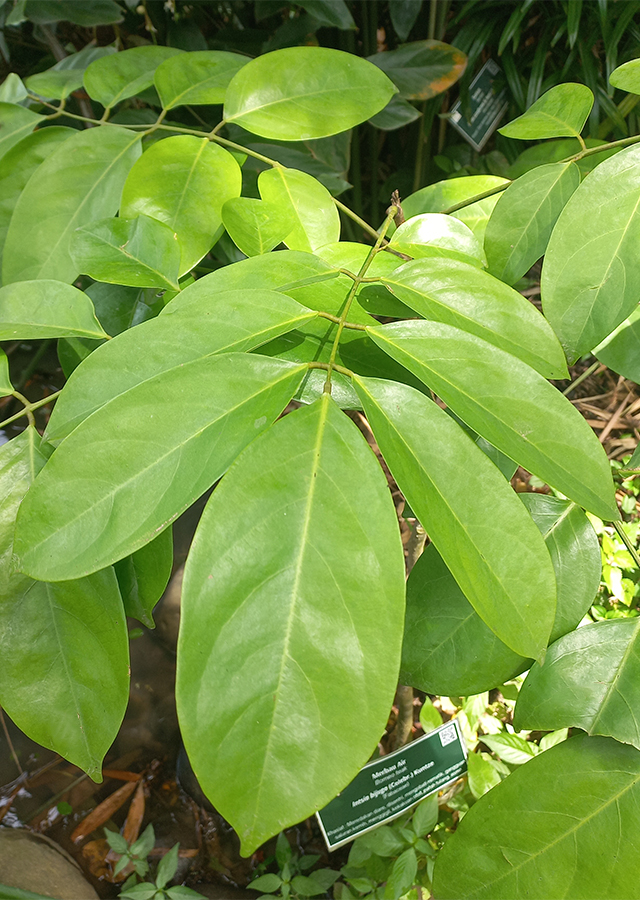Traditional Herbs from Intsia bijuga
rheumatism
- Take enough water from merbau bark, wash until clean.
- Boil the bark until it boils.
- Let it warm/cool.
- Strain then drink.
What is Intsia bijuga Looks like??



Parts of Intsia bijuga that could be used
- Bark
Intsia bijuga Distribution
Intsia bijuga is a species from the Fabaceae family that is widespread in coastal areas of islands in the Indian and Pacific Oceans, including East Madagascar and the Seychelles. I. bijuga has also been planted near sea coasts in Tanzania and on Mauritius. This species is listed as vulnerable according to the IUCN, and is an official tree of the territory of the United States, Guam. Meanwhile, in Fiji, this species was once considered a sacred tree, where drinking a decoction of the leaves was believed to cleanse the body of evil spirits. Apart from that, I. bijuga is widely used by people as food (seeds that have been soaked for a long time and boiled), a source of natural dye (reddish brown), a medicinal plant, a hedge plant, a reforestation program plant, an ornamental plant, a source of wood, and an insect repellent. I. bijuga wood is well known and appreciated because it is hard and durable against termites, and is widely used in construction, furniture making and decorative purposes (carved wood crafts). Traditionally, it is also used to make coffins and canoes. Based on its function as a medicinal plant, I. bijuga also has health benefits and is believed by the public to be able to overcome various disease complaints.Agroecology of Intsia bijuga
Habitat Intsia bijuga is generally found growing in undisturbed moist forests in the eastern coastal zone, it can also be found in coastal areas, often in the zone behind mangrove forests, but is also found inland up to an altitude of 600 m above sea level. It usually grows in areas with an average annual rainfall of 2000-3000(3500) mm, with up to 3 dry months, and an average annual temperature of around 24 - 27 °C, in well-drained sandy soil. good with a pH of 4.7–5.3. Intsia bijuga also has some resistance to salt spray and saline soils as well as wind. However, I. bijuga cannot tolerate longer periods of drought.
Morphology of Intsia bijuga
- The stem is often low-branched but sometimes unbranched up to 18 m. The surface of the bark is smooth, pale gray to pale brown with an orange tinge. The inner bark is thick, fibrous, pale red to pale yellowish brown, and mottled brown. Crown rounded to umbrella-shaped, solid.
- Leaves arranged alternately (alternate) or spiral, compound paripinnate with (1\u2013)2\u20133 pairs of leaflets, stipules fused at base. Petiole thick, 1-2 cm long, rachis up to 8 cm long at the apex, the leaf margins are flat, the surface is rough, glabrous, the veins are pinnate with 12 - 20 pairs of lateral veins.
- Bisexual flowers, zygomorphic, fragrant, white or reddish, pedicel about 3-5 mm long, with 2 deciduous bracteoles, 4 elongated sepals, unequal, ovate, petals 1, about 1 - 3 cm long with\. u00a0claws at the base and serrated lamina are wider than long, have a white tinge of yellow or pink. Stamens 3,\u00a0hairy, purple-red. Superior ovaries, compressed spindle-shaped, hairy, 1-celled. Inflorescences are held in terminal panicles 6 - 10 cm long, short hairy.
- Fruit pods, oval, flat, glabrous, pale brown, with few veins raised, slow to break with 2 rough to woody valves. Each pod contains 3 - 9 seeds.
- The seeds are discoid to oval, dark brown, more or less covered with a removable rusty brown scurf.
Cultivation of Intsia bijuga
- Propagation of plants through seeds. Propagation by suckers (root suckers) and cuttings is also possible.
- Germination can take up to almost 2 years. To encourage rapid and simultaneous germination, scarification followed by immersion in water is necessary. Scarification techniques the most effective is to use a file to scrape off the small protrusions of the seed coat (strophioles) located on the opposite side of the hilum. Soaking in concentrated sulfuric acid for one hour is also effective for breaking the seed coat. Seeds must be planted vertically with the hilum downwards, so that the seed coat is removed when the hypocotyl emerges from the soil. Seeds can also be sown directly into the field.
- Seedlings require high light intensity for optimal growth, and in open areas their growth is much faster than under closed canopy conditions. However, experiments in Indonesia show that the growth of seedlings in the shade or under shady trees faster than in full sun. Proper drainage and high air humidity are important for good growth. Seedlings can be moved to the field when they are around 3 months old, with a spacing of 3 m = 7 4 m or 5 m = 7 5 m.
Intsia bijuga, more details :
Chemical Content of Intsia bijugaTannins, anthrones, flavonoids, glycosidic flavonoids, phenolic compounds, steroids, triterpenes, anthraquinones, coumarins, robinetin (main polyphenols of heartwood) along with 3,5,4'-tri and 3,5,3',4'-tetrahydroxystilbenes, dihydromyricetin myricetin, and narigenin.
Benefits of Intsia bijuga
Relieves diarrhea, dysentery, treats rheumatism, urinary tract disorders, chills, muscle stiffness and rheumatoid arthritis, bone fractures, asthma, toothache, sore tongue, headaches, scabies, enlarged lymph nodes, diabetes, coughs, given to women after giving birth, acts as a laxative.
Simplisia of Intsia bijuga
Another Facts for Intsia bijuga :
Synonym of Intsia bijugaAfzelia bijuga (Colebr.) A.Gray, Macrolobium bijugum Colebr., Outea bijuga (Colebr.) DC.
Habitus of Intsia bijuga
Tree. Small to medium tree, annual (perennial), grows up to 50 m, diameter up to 80(–120) cm.
Habitat of Intsia bijuga
- Forest", "Coastal", "Roadside", "Land
No comments:
Post a Comment